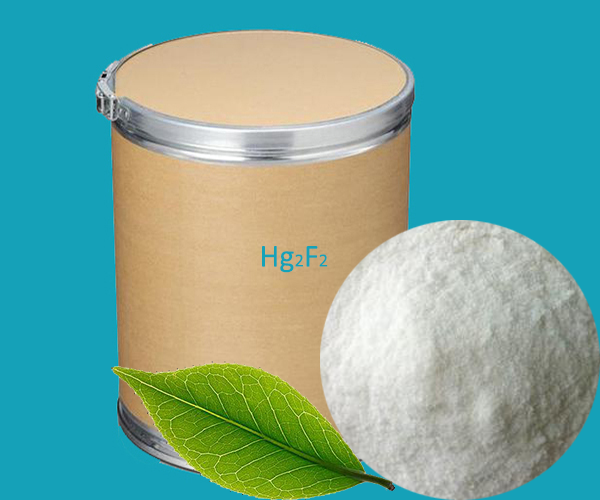Mercury(I) fluoride or mercurous fluoride is the chemical compound composed of mercury and fluorine with the formula Hg2F2. It consists of small yellow cubic crystals, which turn black when exposed to light.
At room temperature and pressure, it is a white solid, but because it easily reacts with moisture and carbon dioxide in the air, it is unstable in the air and will quickly turn black. This substance has no important industrial use and should be avoided due to its high toxicity and environmental hazards.
Properties of Mercury(I) Fluoride
Chemical formula : Hg2F2
Molar mass : 439.177 g/mol
Appearance : yellow cubic crystals
Density : 8.73 g/cm³, solid
Solubility in water : decomposes
Uses of Mercury(I) Fluoride
- Fluorinating agent: Mercurous fluoride is a weaker fluorinating agent with similar activity to silver fluoride and requires the presence of iodine when fluoridating.
- Catalysts: Mercurous fluoride has a catalytic effect in some chemical reactions and can be used in certain organic reactions.
- Preparation of other compounds: Mercurous fluoride can be used to prepare other mercury compounds such as mercurous chloride, mercurous bromide, etc., by reacting with other compounds.
- Analytical chemistry: Mercurous fluoride also has some applications in analytical chemistry, for example for the quantitative analysis of mercury.
It should be noted that mercurous fluoride is toxic and harmful to both humans and the environment, and safety measures need to be taken when using and handling. At the same time, mercurous fluoride is a photosensitizing substance and should be avoided from light.
 English
English Español
Español Português
Português Français
Français Deutsch
Deutsch Русский
Русский 中文
中文 日本語
日本語
